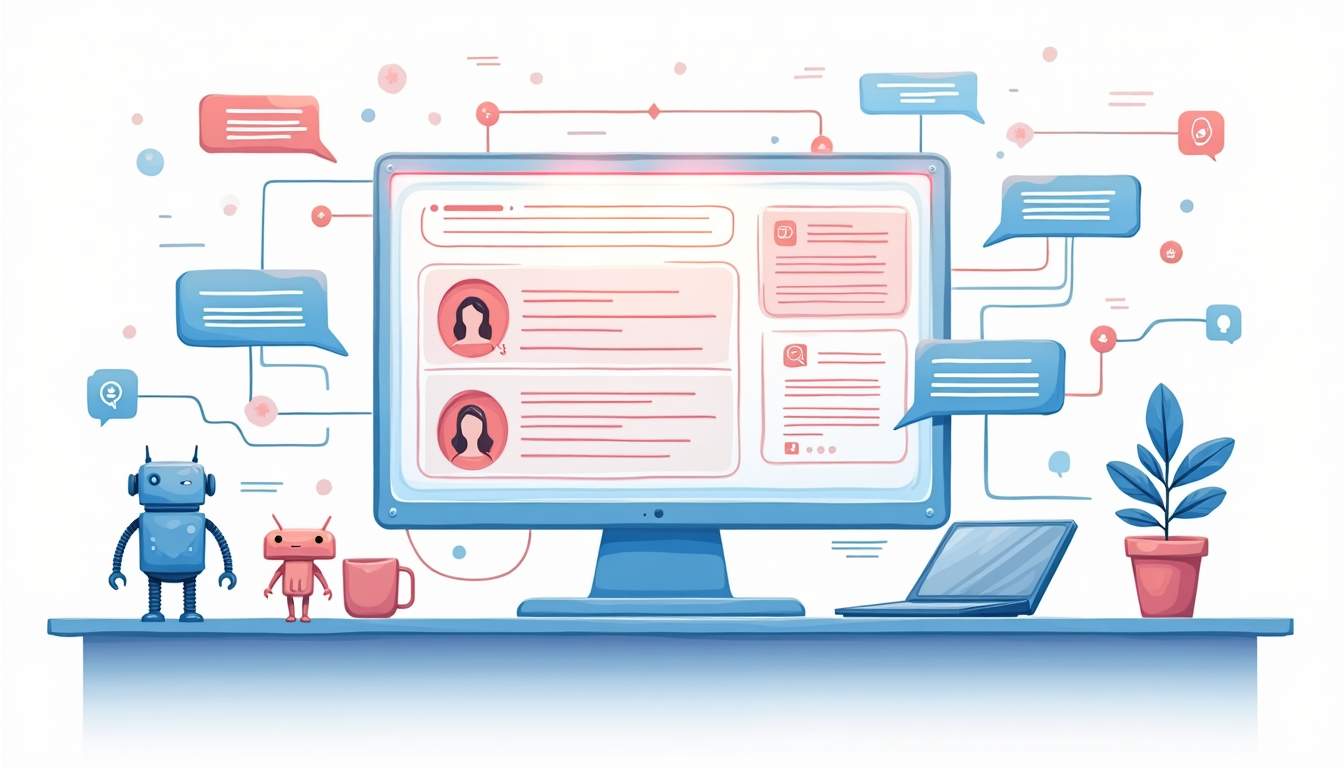Building AI-Powered Customer Support Systems
Customer support has become a frontline differentiator for businesses competing on experience rather than price. Modern customers expect fast, accurate, and context-aware help across channels. AI-powered systems are now capable of classifying incoming requests, generating relevant responses, routing tickets to the right teams, and learning from every interaction to improve over time. This article explores two foundational capabilities—Natural Language Processing for Ticket Classification and Automated Response Generation and Routing—explaining how they work, why they matter, typical implementation patterns, and practical considerations for deploying them safely and effectively.
Integrating classification outputs into existing ticketing and workflow systems requires careful interface design and orchestration. Webhooks, message queues, or event-driven architectures can propagate labels, confidence scores, and suggested agent assignments into downstream tools while preserving audit trails. Feature flags and staged rollouts let teams run the classifier in advisory mode—where agents see suggestions but retain final control—before enabling full automation. Additionally, A/B testing and shadow mode evaluations provide low-risk ways to quantify business impact (reduced handle time, improved SLA compliance) and surface edge cases that only appear at scale.
Operational cost and maintenance are often overlooked but critical: model training, inference compute, and annotation labor all contribute to total cost of ownership. Synthetic data augmentation and label propagation techniques can reduce labeling effort for rare classes, while periodic retraining cadences should be informed by monitored drift metrics rather than a fixed calendar. Finally, investing in annotation tooling with clear guidelines, quality checks, and inter-annotator agreement tracking pays dividends by producing cleaner training data and accelerating model iteration cycles.
Automated Response Generation and Routing
Once a ticket has been classified, two complementary processes come into play: generating an initial response and routing the ticket to the appropriate handler. Automated response generation covers a spectrum from filling pre-approved templates with contextual data to producing fully personalized messages using generative models. Routing determines whether the ticket is resolved automatically, sent to a bot conversation, or assigned to a human agent with relevant skills, history, and workload considerations.

Response strategies: retrieval, templating, and generation
Safe and effective automated responses usually begin with reliable, vetted templates. Template-based responses ensure compliance with policy and reduce the risk of incorrect or harmful statements. Retrieval-based systems expand this by searching a knowledge base for the best matching article or response fragment, ensuring relevance while preserving guardrails. Generative models add flexibility—crafting tailored explanations, summarizing account details, or converting technical jargon into plain language—but they need safeguards against hallucination and policy violations. Hybrid systems that generate candidate text and then verify it against the knowledge base and business rules combine creativity with safety.
Human-in-the-loop and escalation design
Designing the handoff between automation and agents is critical. For high-risk requests—refunds, legal issues, or account-sensitive changes—automation should act only as an assistant, offering suggested replies or next steps for agent approval. Confidence thresholds, sentiment spikes, or triggers like escalatory language can automatically route tickets to senior agents or managers. Equally important is giving agents tools to quickly edit generated replies, see the source of fetched knowledge, and log decisions so the system can learn from corrections.
Intelligent routing and workforce optimization
Advanced routing systems consider multiple factors: ticket type, agent expertise, current workload, SLAs, language skills, and customer value. Machine learning can predict resolution time and match tickets to agents likely to resolve them quickly, improving both efficiency and customer satisfaction. For large teams, skills-based routing and dynamic queue prioritization prevent bottlenecks and ensure that high-priority, time-sensitive issues are handled first. Integrating routing with workforce management systems also enables proactive staffing adjustments based on predicted ticket volume.
Safety, compliance, and audit trails
Automated messages can amplify mistakes if not monitored. Implementing approval workflows for new or modified templates, automated testing that checks generated replies for factual consistency, and content filters for disallowed or sensitive phrases reduces risk. Every automated action should produce an auditable log linking the classification, the knowledge sources consulted, and the rationale for routing or response. These logs support compliance reviews, root-cause analyses, and continuous improvement.
Measuring impact and continuous improvement
Key metrics include first-response time, resolution time, first-contact resolution rate, escalation rate, net promoter score (NPS), and agent productivity. For automation-specific measurement, track automation rate (percentage of tickets fully handled by automation), automation accuracy (percentage of automated interactions that required no human correction), and rollback rate (automated actions reversed by humans). A/B testing different templates, classification thresholds, or routing policies provides empirical evidence for optimization. Feedback loops that incorporate agent edits and customer satisfaction signals into model retraining close the learning loop and improve performance over time.
Deployment considerations and operational maturity
Start with low-risk automation and expand coverage as confidence grows. A phased rollout—pilot with internal users, move to low-impact customer segments, and then full deployment—reduces exposure. Invest in monitoring dashboards that surface model health, user feedback, and business KPIs in real time. Prepare rollback plans and runbook procedures for incidents where automation behaves unexpectedly. Finally, foster cross-functional collaboration between product, support, legal, and data teams to ensure the system aligns with business objectives and regulatory constraints.
Privacy-preserving techniques and data minimization should be embedded into both response generation and routing pipelines. Anonymization, tokenization, and purpose-limited access reduce exposure of sensitive customer attributes when training models or fetching context. Differential privacy or on-device inference for parts of the workflow can further limit data egress, while role-based access controls and data retention policies ensure that only necessary context is used and stored. Logging should capture provenance without including raw sensitive fields, enabling audits without compromising customer privacy.
Internationalization and localization are often overlooked but critical for global deployments. Systems must handle multilingual classification and generation, local laws around communication and consent, time-zone aware SLAs, and culturally appropriate phrasing. Incorporating locale-specific knowledge bases, transliteration where necessary, and support for right-to-left languages ensures consistently accurate routing and responses. Additionally, language-detection confidence and region-specific escalation rules help route tickets to agents with the right linguistic and regulatory competence.
AI-powered customer support systems offer a compelling combination of speed, scale, and personalization when designed with care. Natural language processing makes sense of messy, unstructured ticket text so that the right action can be taken quickly. Automated response generation and intelligent routing close the loop by delivering answers or directing work to the most capable resource. When backed by robust data practices, human oversight, and continuous evaluation, these systems reduce cost, improve customer satisfaction, and free agents to focus on higher-value problem solving.






